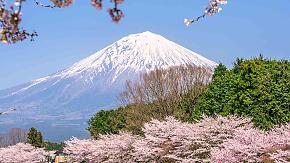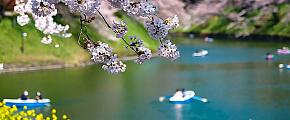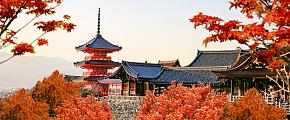Mt. Fuji Travel Guide: Best Time, Activities & More
When it comes to Japan, Mount Fuji may be the first thing that comes to mind. Its breathtaking scenery and colorful culture make it a top tourist destination. To enable you to make the most of your tour to Japan, including what to do to enjoy the scenery, and where to stay when traveling there, below is the Mt. Fuji travel guide to clear up any questions you might have about the snow-capped mountain.
Why Is Mt. Fuji Worth Visiting
With its iconic image seen worldwide, Mt. Fuji may feel familiar even if you've never visited Japan. As the country's highest peak, this active volcano stands at 3,776 meters. Featured on the back of the 1,000 yen note, Mt. Fuji is both culturally and naturally significant, earning its status as a UNESCO World Heritage Site in 2013.
Renowned for its perfectly symmetrical cone shape and snow-covered peak for about half the year, Mt. Fuji offers stunning views year-round. You can enjoy the spring cherry blossoms around Lake Kawaguchi, the fiery red leaves of autumn in the Momiji Corridor, and summer hikes to explore this sacred mountain up close - making it an ideal destination for all your adventures.
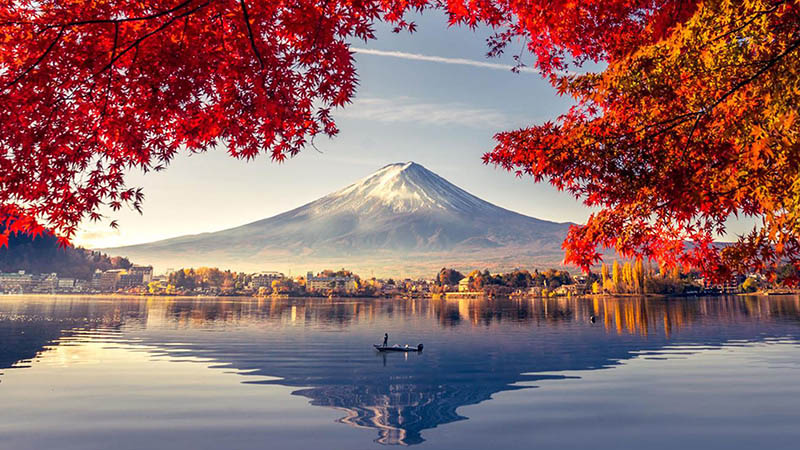 Mt. Fuji With Autumn Leaves
Mt. Fuji With Autumn Leaves
When Is the Best Time to Visit Mt. Fuji
As a year-round destination, the best time to visit Mount Fuji depends on your preference for viewing or climbing.
If you want to spot Mount Fuji in the distance, winter between December and January is the best time to get a wonderful view of the snow-capped mountain and its cloudless summit.
For outdoor activities around this formidable mountain, the pleasant and sunny weather in spring (March to May) and autumn (September to November) offer the best opportunities, with cherry blossoms in full bloom, while autumn blesses the surrounding volcano with beautiful shades of red and orange.
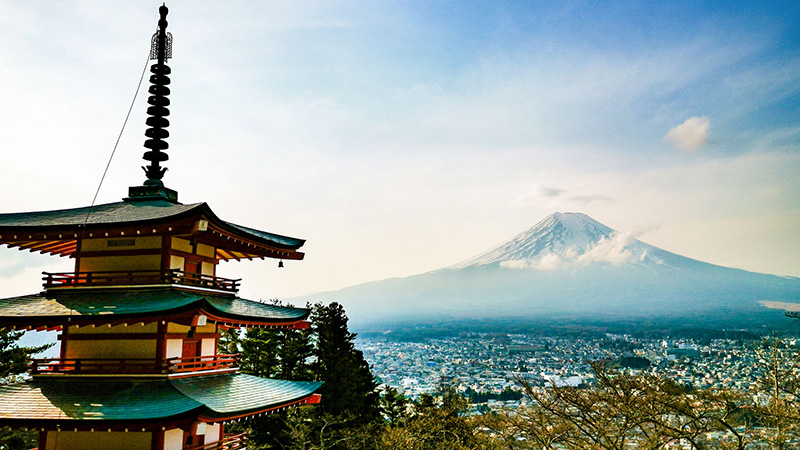 Mount Fuji, the Sacred Mountains
Mount Fuji, the Sacred Mountains
If you're planning to climb, Mt. Fuji is usually open from early July to early September, when temperatures are mild and the summit is mostly free of snow.
To avoid crowds at the summit, it's best to climb in September. The busiest period is from mid-July to August, when locals go on summer holidays and the Obon Festival falls. If climbing during the Obon holiday, try to choose a weekday to avoid the heaviest crowds and long waits.
How to Experience the Beauty of Mt. Fuji
Capture Mt. Fuji in the Distance
If you visit Tokyo between November and February, you can capture an image of Mount Fuji in the distance.
The city has numerous vantage points from which visitors can observe the mountain. On a clear morning, the Tokyo Metropolitan Government Office Observatory, Tokyo Tower, the Tokyo Skytree, Roppongi Hills Mori Tower, and Roppongi Hills Mori Tower are all excellent vantage points from which to observe Mount Fuji.
Activities Around Lake Kawaguchi
It is a surprising location to see Mount Fuji surrounded by traditional Japanese cottages and to take photographs of its reflection in the lake. Enjoying a boat ride through the mirror-like surface is always a good idea.
The lake resort area offers an abundance of outdoor activities, such as hiking, fishing, camping, and wildflower viewing. You can visit the renowned amusement park in Fuji Q Highland to ride the thrilling rollercoasters.
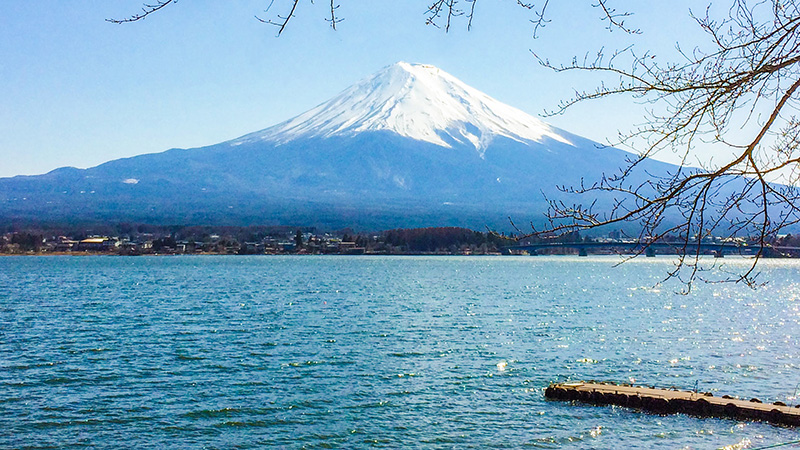 Mount Fuji & Lake Kawaguchi
Mount Fuji & Lake Kawaguchi
Take the Tokaido Shinkansen
Another comfortable way to view Mount Fuji is quite unexpected. By taking a window seat on the Tokaido Shinkansen, you can take in the magnificent scenery of the giant mountain as you travel to your next destination, such as Kyoto and Osaka.
If you have less time to get to the foot of the mountain, the Shinkansen is also highly recommended for a short sightseeing trip.
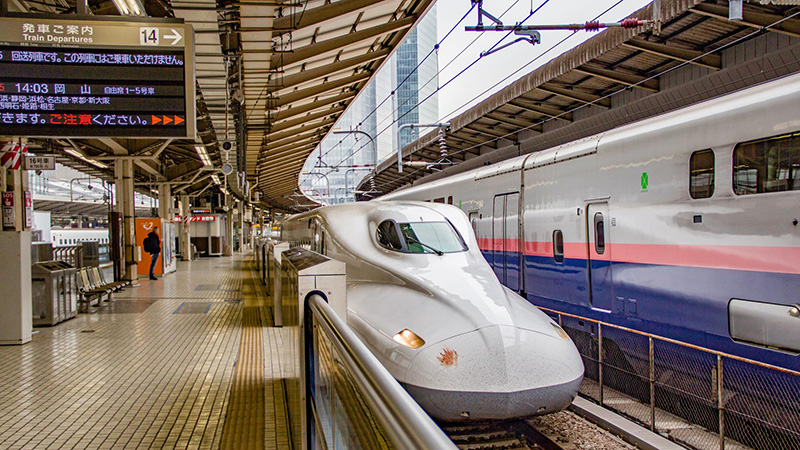 Shinkansen
Shinkansen
Visit Hakone National Park
Located in Hakone, it is a pleasant park beneath the majestic Mount Fuji, including the serene Hakone Shrine on the beautiful Lake Ashi.
You can take an easy walk along the lake or through the forest and take a photo with the red Torii near the lake. If your Japan tour is in spring, you can also see the vibrant cherry blossoms along the way. Or take a boat ride on the tranquil lake with the magnificent white mountain as a backdrop.
Where to Stay When Traveling Around Mount Fuji
- Lake Kawaguchiko area: for a pleasant cruise on the lake with magnificent reflections
- Lake Yamanakako area: for beautifully detailed photos of the mountain sunset
- Fuji City: for the colorful nightlife to enjoy Japanese sake
- Hakone area: enjoy the onsen hot springs and Mt. Fuji in the distance
How Do I Get to Mount Fuji From Tokyo
Mount Fuji is located about 100 kilometers west of Tokyo, and there are several ways to get there, including taking a bus or a train, hiring a private transfer, or self-driving.
By Bus - About 2.5h
Taking a direct bus is often the cheapest way to reach Mt. Fuji from Tokyo. You can take a highway bus from Shinjuku straight to the Fifth Station, located halfway up the mountain, and start your climbing from there. Alternatively, stop at Kawaguchiko Station for scenic views of Mt. Fuji or visit Fuji-Q Highland for thrilling amusement park rides.
By Train - About 1h
One of the most convenient ways to reach Mt. Fuji while enjoying breathtaking views of the mountains and lakes along the way is by taking the Fuji Excursion Limited Express train from Tokyo's Shinjuku Station to Kawaguchiko Station. This train service runs twice on weekdays and three times on weekends, with morning departures available.
By Private Car - About 1.5h
A private car driving is an enjoyable way to reach Mt. Fuji in around 1.5 hours. Many rental car companies in Tokyo offer cars for rent. If you love to be more relaxed, a private driver from Odynovo may be a good idea. You have the potential to stay at Otsuki halfway by car and stop to view old shrines, the river valley, and the twin waterfalls (Taro and Jiro).
Is Mount Fuji Active
Mount Fuji is still active today. The last confirmed eruption of the volcano can be traced back to December 16, 1707, during the Edo period. However, visitors need not worry about this, as the Mt. Fuji area is always observed and closely monitored, and the latest condition of the volcano is regularly announced.
Capture the Stunning Mt. Fuji With Odynovo
Hope that this Mt. Fuji travel guide has brought you something new. Whether you're looking for singular natural views or a variety of fresh activities, Mount Fuji is sure to treat you to the ultimate fun. If you're planning a trip to Mount Fuji, please contact Odynovo at [email protected] for your customized itineraries with preferable experiences of local attractions and activities.
Quick Question
Related Posts You May Like
What Our Clients Say
Explore the latest verified reviews of Odynovo's travel services on Tripadvisor, Google, Trustpilot, Product Review and more trusted platforms.
SUBSCRIBE TO WIN A FREE TOUR
Subscribe to our newsletter for a chance to win a free 7-day tour to India! And more insider travel news, exclusive offers, and inspiration will be sent straight to your inbox. Check our previous newsletters and get some sparks.

